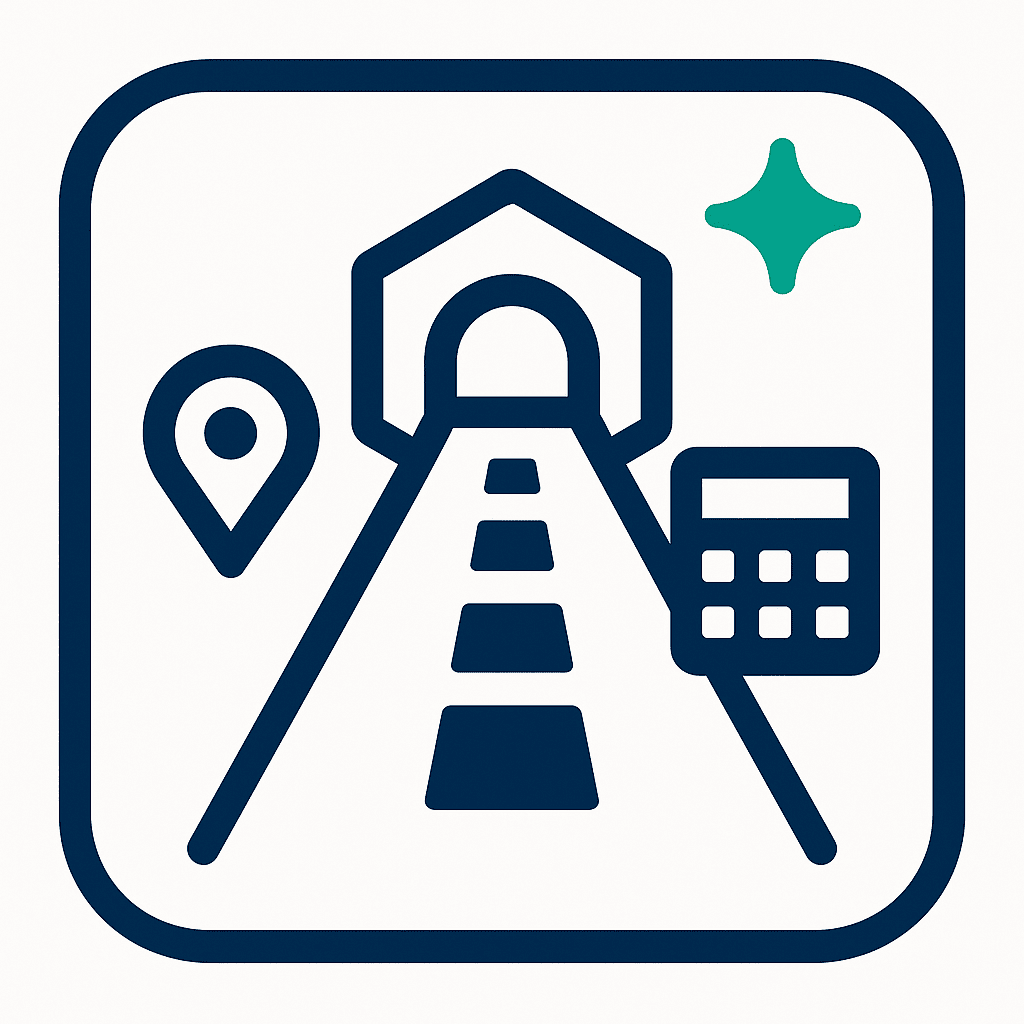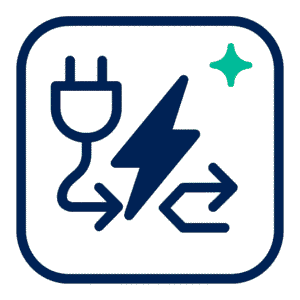Core rule: coordinate scaling and the conversion operation
The simplest and most important numeric fact is the horizontal scale between dimensions: one block of horizontal distance in the Nether corresponds to eight blocks in the Overworld. The practical conversion operations are therefore:
- Convert coordinates to Nether (Overworld → Nether): divide X and Z by 8; retain Y (height).
- Convert coordinates to Overworld (Nether → Overworld): multiply X and Z by 8; retain Y.
A fast-travel calculator implements that mapping and typically offers floor/ceiling rounding options and a choice of coordinate formats. Use an overworld to nether coordinate converter when laying out endpoints or when feeding a nether hub planning calculator. Popular web tools include OmniCalculator’s Nether Portal tool and Minefort’s nether portal calculator; they implement coordinate conversion and can also produce block-count estimates for portal frames.

Useful links: OmniCalculator: Nether Portal, Minefort: Nether Portal Calculator.
Portal linking mechanics and the source of jitter
Portal linking is not just a 1:8 mapping: the engine searches a bounded region around the mapped destination for an existing portal and will create one within a finite column if none exists. The Minecraft Wiki states this explicitly:
“The Nether portal spawning algorithm can only spawn a portal within a 33×33 block column centered on the destination, but it does scan that width (and the height of the world) for open space to place the portal.”
Another relevant rule is the generation fallback: if the engine does not find an existing portal within the configured search area, it may create a portal within a larger tolerance specified by the rules for that edition/version of the game. The running implication is that multiple origin portals can map to overlapping search volumes in the destination; when more than one candidate exists the engine chooses the nearest portal by Euclidean distance inside the search volume. That nearest-portal selection is the direct cause of link jitter — sudden or repeatable re-routing between candidate destination portals — particularly in multi-player or high-density hub contexts.
Reference: Minecraft Wiki — Nether portal tutorial.
Quantitative spacing rules and pragmatic tolerances
A planner must convert theoretical rules into practical margins. The following numeric rules are conservative and grounded in the Wiki algorithm and community experience:
- Nether-node separation for independent links: plan nodes so their mapped Overworld anchors are at least 1,024 blocks apart (this corresponds to ~128 blocks separation in the Nether). That margin places candidate search columns out of practical overlap for large hubs.
- Local portal chamber tolerance: always create the destination portal first at exact converted coordinates and ensure a one-block clear perimeter to avoid unintended local collisions. The destination portal should occupy the central position of the scanned 33×33 column.
- Vertical alignment: keep Y values consistent where practical. The engine’s search is three-dimensional; a small vertical offset can invert the Euclidean ordering between candidates and change the chosen link.
These numeric tolerances are the inputs for a nether portal coordinate ratio tool and for a portal overlap checker minecraft utility. Use such tools to simulate candidate search volumes and to flag collisions before committing expensive obsidian. Mapping tools such as Chunkbase assist in visualising hub-level layouts once seeds or coordinates are known.
Visualisation tool: Chunkbase seed map & tools.
Design patterns: highway, radial hub, grid hub
The transit topology depends on goals: raw speed, centralized connectivity, or flexible multi-node access.
Linear Nether Highway (fastest point-to-point)
- Convert origin and destination Overworld coordinates to Nether coordinates (divide X/Z by 8) and connect them with a direct, straight tunnel at a safe Nether Y. Straight-line tunnels permit constant high-speed travel using sprinting or minecart segments.
- Provide spaced safe chambers every 1,000–2,000 Nether blocks for emergency shelter (respawn anchors or safe houses).
- Where throughput matters, build parallel walking and minecart tracks; plan entry/exit portals at the tunnel’s endpoints using an overworld to nether coordinate converter to ensure alignment.
Radial Hub (one-to-many)
- Build a compact hub in the Nether with spokes to peripheral nodes. For each Overworld anchor convert X/Z to Nether coordinates, build a spoke to that coordinate, and place the portal chamber there (destination-first workflow recommended).
- Use a nether hub planning calculator to test overlap across spokes and to compute total materials.
Grid Hub (multi-team servers)
- Lay out a regular tile in Nether coordinates so each hub node aligns with a predictable tile index. A grid hub simplifies coordination: a portal at Nether (x, z) maps to Overworld (8x, 8z) and avoids arbitrary offsets.
- The planner should run a portal overlap checker minecraft pass to ensure that mapped Overworld anchors map to unique Nether search columns.
Material, time and resource estimation
A fast-travel calculator should return a material list, travel-time estimate and risk buffer:
- Materials: obsidian per portal (10 minimal / 14 with corners) multiplied by node count; extra buffer for safe nether portal placement (platforms, roofs) and for contingency replacement. Use a minecraft nether portal calculator to compute frame counts and to export a shopping list.
- Time: compute mining time per obsidian block (tool tier and enchantment dependent), transport time (shulker box vs repeated trips), and tunnel excavation throughput (use TNT for rapid large-scale projects if permitted on the server).
- Operational risk: include time for forced re-links (destroy unwanted portals and recreate at target) when planning high-density projects.
A portal linking calculator tool integrates conversion, portal-frame computation and an overlap simulation to produce a per-node materials total and a hub-wide estimate. Use those outputs to schedule resource collection and to allocate builder teams.
Practical workflow and build checklist
- Record Overworld anchor coordinates precisely using F3 (or in-game coordinates).
- Convert coordinates to Nether using an overworld to nether coordinate converter. Save converted coordinates to a shared registry.
- Reserve destination cells in the Nether (clear a vertical column and prepare a protected chamber).
- Build and light destination portal at converted coordinates.
- Build the origin portal and test; if mislink occurs destroy unintended destination portals, rebuild at the precise target and retest. Use a portal overlap checker minecraft beforehand to reduce rework.
Tools, references and authoritative quotes
- OmniCalculator’s Nether portal tool provides coordinate conversion and block-count modes for fast shopping-list generation: OmniCalculator: Nether Portal.
- Minefort and NetherCalculator are focused portal utilities that include rounding and build hints for reliable linking: Minefort, NetherCalculator.
- Chunkbase’s seed and mapping apps visualise hubs across a seed and identify features useful for hub-node placement: Chunkbase.
The canonical portal-spawning description used above appears in the Minecraft Wiki tutorials: “The Nether portal spawning algorithm can only spawn a portal within a 33×33 block column centered on the destination, but it does scan that width (and the height of the world) for open space to place the portal.”
Final Considerations
A disciplined Nether highway planner and fast-travel calculator turn the 1:8 coordinate rule into a robust highway topology, material shopping list and construction schedule. Use an overworld to nether coordinate converter and a minecraft nether portal calculator to convert and confirm targets; iterate with a portal overlap checker minecraft and a nether hub planning calculator when projects scale beyond a handful of nodes. Preserve deterministic linking by creating destination portals first, enforcing Y alignment, and reserving the destination column before ignition. Track portal pairs in a shared registry and include contingency material buffers for replacement work. With a data-driven plan and the right utilities the player can optimize nether travel, reduce jitter-related rework and deliver a reliable fast-travel backbone for solo play or large servers.






